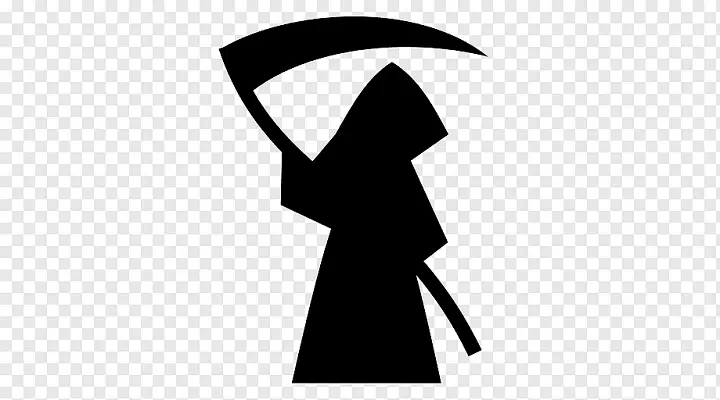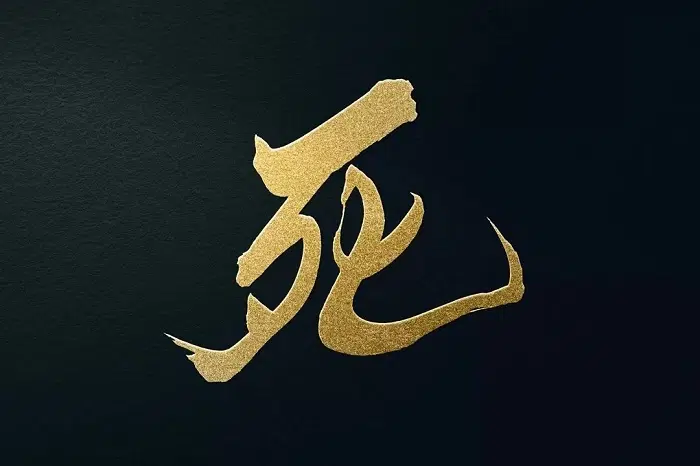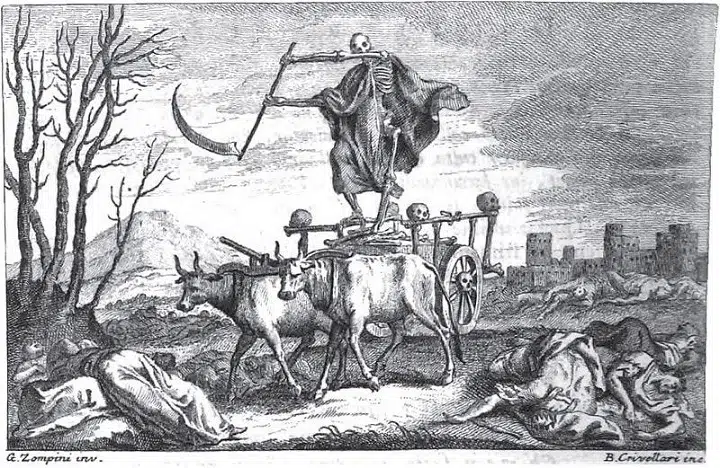Death is inevitable. All living things born will die and live. Just like it is something that every human being experiences, human beings have never been in a place to accept and understand death as a symbol. Death symbol is a graphical representation of the idea of the ending of life, transformation, or transition from the world to somewhere else.
Death has also had many symbols over the course of human history. They have been used to symbolize warning or fear, or peace and sleep, or rebirth.
What Is a Symbol of Death
Death symbol is an object, image, or shape that represents death or a transition from life to afterlife. It also represents darkness, threat, or change. People utilize these kinds of symbols to convey emotions about death, mortality, and afterlife.
Death symbols and their meanings are the following:
| Symbol | Meaning | Use |
| Skull | Death of life, death | Warning signs, art, tattoos |
| Grim Reaper | Personification of death | Literature, movie |
| Black color | Bereavement, sorrow | Mourning attire, flags |
| Raven or crow | Messenger of death | Mythology, folklore |
| Hourglass | Passage of time | Art, old books |
| Wilted flower | Death of beauty or life | Monuments, tombs |
| Coffin or tomb | Physical death | Tombstones, funerals |
They are all saying the same thing to us. That life is transient and that death is part of the cycle of life.
The Origins of the Symbol of Death
Symbols of death date back in history. Human beings of centuries ago were worried about knowing what happens to human beings after death. Symbols and images were drawn to depict the mystery.
- Death and protectors of the dead were symbolized by Anubis (jackal-headed god) in ancient Egypt.
- Powers of war and fate of all human beings were symbolized by bones and a skull in ancient Greece.
- The “memento mori” visual reminder was used in Europe in the Middle Ages to remind people that one and all would die sooner or later.
- Death in Asia was a transformation and not an end, and in that regard too, the symbols of yin-yang or lotus flowers were used as the symbol of harmony and of renewal as well.
Previous world in their mindset and perception of death.
Symbols of Death and Their Significance
Skull and Crossbones
- Skull is the most widely utilized symbol of death across the world.
- It represents danger, death, and mortality.
- Pirates used it as a warning to people.
- It is used today in chemical notation and warning signs to indicate poison or danger.
Grim Reaper
- There is a convention for Grim Reapers to be a skeleton. He has a black hood-like cowl cape and holds a scythe.
- The scythe represents reaping the souls, where the crops would be harvested in a field.
- It was utilized in Europe during the times of famines and plagues rampant.
Black Colour
- Black is the most frequent color utilized. It represents death and mourning.
- The color is a sign of darkness, mourning, and the future.
- It is used at funerals everywhere as a symbol of respect for the deceased.
Crows and Ravens
- These omen birds of death are always linked to being messengers of the dead and the living.
- They are omens of death or warning to some cultures.
- They are omens of wisdom and transformation to other cultures.
Hourglass
- The hourglass is a reminder that time is not abundant.
- When the sand runs out, life is gone.
- It is also a reminder to enjoy the best of life because one can’t turn back the clock.
Scythe
- Scythe, used in harvesting grain, illustrated the transience of life.
- It is associated with the Grim Reaper and human being’s mortality symbol for life.
Wilted Flower
- Wilted flower symbolizes death of beauty, youth, or life.
- It is typically pinned in the usual fashion on tombs or gravestones as a mournful peaceful reminder of death.
Coffin and Tombstone
- They are material reminders of death.
- They also symbolize the fact that the human being cannot forget and recall the dead.
Butterfly
- The butterfly in the majority of cultures symbolizes transformation and the immortality of the soul, even though the body perishes.
- Reminds the human being of the fact that death can also be initiation.
Symbol of Death in Cultures
Death is viewed differently throughout the world. Some of the ways the various cultures symbolize death are:
- Egyptian Culture: Utilizes the scarab beetle and Anubis as symbols to protect the dead.
- Chinese Culture: Utilizes white throughout the funeral and death ceremonies rather than black.
- Mexican Culture: Skulls adorned with flowers and other decorations known as “Calaveras” are utilized in order to represent the dead loved ones who have passed away during the Day of the Dead festival.
- Japanese Culture: Red spider lily or Higanbana are employed to symbolize death and traveling to the afterlife.
- Western Civilization: Blackness, crosses, and skulls are all employed in death rites with artwork.
Though symbols differ, implication remains the same, enjoying life and accepting death.
Symbol of Death in Religion
Symbols in religion are employed to symbolize death as an entrance to life after death.
- Hinduism: God of the dead is Yama. Rebirth after death is represented by lotus and samsara.
- Christianity: Death and rebirth are represented by a cross. Cross symbolizes that death can lead to eternal life.
- Buddhism: Birth-death-rebirth is symbolized by garlands of gods’ skulls, i.e., wheel of life.
- Islam: Crescent moon can symbolize the cycle of time and the temporary flight of the soul.
Spiritual and peaceful rebirth, not horror, are religious symbols of death.
Toasts and religious resurrection, and not horror, are religious symbols of death.
Death Symbols in Art and Literature
Symbolic representations of death have been utilized by artists and writers to express ideas and sentiment.
In Art: Blackness, or darkness, were utilized by artists when treating breviteness of life.
In Poetry: Stopped clocks or dead flowers are utilized as the symbolic representation of death of time.
In Contemporary Media: Literature and film employ the dark wings or the Grim Reaper as symbols of death.
Death becomes something introspective and intriguing out of terror through art.
Also Read: Baking Mode in OTG Symbol: Meaning, Purpose, and Examples in Simple Words
Positive Symbolism of Death
Unpleasant symbolisms of death are not all. Some very few symbolize hope and resurrection:
- Phoenix: Legendary bird that succumbs to death in fire and yet is reborn, symbolizing resurrection.
- Lotus Flower: Rises from the mud of water, symbolizing purity and cycle of life and death.
- Tree of Life: Symbol for death and birth, and while seeming on the surface to be bitter foe, representing harmony of nature.
These symbols to us suggest that death does not have to be the end but rather part of an extended cycle of life out there.
Why Human Beings Utilize Death Symbols
Death symbols are employed by human beings for a myriad of reasons:
- Representation of bereavement or remembrance.
- To represent danger to others.
- To defy the meaning of life.
- To utilize sad feelings in the form of producing beauty and art.
- To represent identification with culture and heritage.
Symbols of death are the way human beings deal with what they cannot do, i.e., die and mean.
Symbol of Death in Contemporary Culture
Symbols of death are taking over our contemporary culture but individuals don’t know about them.
On highway signs.
They show up on tombstones, bumper stickers, car decals, and tees.
On video games, where “game over” is attained through a red screen or skull.
On fashion, where skull patterns are used as symbols of power and defiance.
On memorial tattoos, where people use flowers, names, or wings as symbols to remember the departed.
Life today still uses such very ancient symbols to convey feelings irretrievably difficult to put.
Death Symbols Life Lessons
Death symbols teach us three very useful things:
- Life is fleeting: Limited time, and the time is so valuable.
- Death is natural: Death is not to be fought but embraced as part of life.
- Memory provides meaning: Having them that passed away with us in our memory keeps their memory alive.
Black is death but also mourning. Mourning doesn’t just include black. It’s remembrance, recollection, then birth as well. From skulls and darkness to butterflies and flowers, all the symbols are imbued with meaning in this way that death and life exist together.
In religion, in culture, even in art, these symbols remind man that death is not a culmination but a transformation. These symbols appeal to human beings to live life to its best, to love to the best of their abilities, and to accept the mystery of life.
When you look at a skull, a wilted flower, or a butterfly, remember that in each of these symbols there is one truth only, that everything which lives has to die, but nothing is ever lost to memory and importance.



